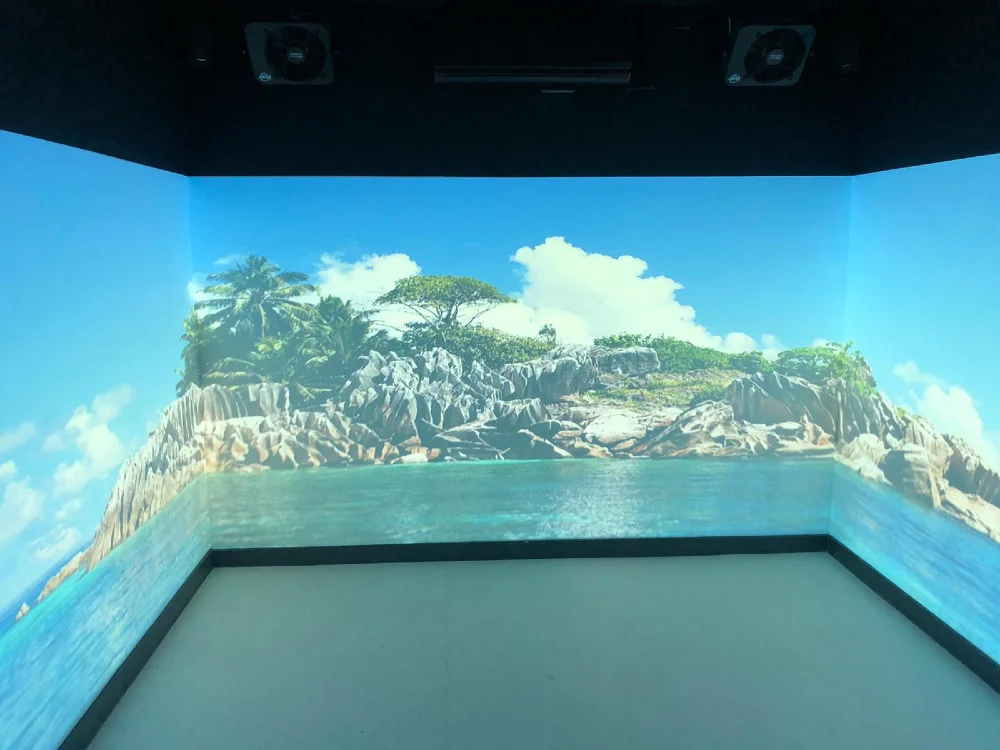Sensory spaces are transformative environments designed to cater to diverse needs, offering a tailored approach to supporting individuals with varying neuro differences.
By considering the unique sensory preferences of each individual, sensory rooms can be adapted to create calming, stimulating, or regulating environments. From autism to ADHD and other neurodiverse conditions, here’s how we design sensory spaces to support different abilities.
Understanding Neuro Differences and Sensory Needs
Each neuro difference comes with its own set of sensory preferences and challenges. Understanding these variations is crucial in designing sensory spaces that are both effective and inclusive. Here’s a breakdown of some common neuro differences and how sensory spaces can be tailored to meet their needs:
Autism Spectrum Disorder (ASD)
Individuals with autism often experience heightened sensitivity to sensory input, such as lights, sounds, and textures. Sensory spaces for individuals with ASD typically focus on creating a calming sensory environment that reduces overstimulation and promotes relaxation.
Key Features of Sensory Rooms for Autism:
- Soft Lighting: Use dimmable lights, fibre optics, or bubble tubes to create a soothing ambience.
- Tactile Elements: Incorporate soft fabrics, weighted blankets, or tactile panels for gentle sensory input.
- Quiet Zones: Include areas with minimal sound and distractions to provide a retreat from sensory overload.
These calming elements can help individuals with autism self-regulate and feel more at ease in their surroundings.
ADHD (Attention Deficit Hyperactivity Disorder)
For individuals with ADHD, sensory spaces often focus on providing a balance between stimulation and regulation. These rooms aim to channel energy in a constructive way while promoting focus and self-regulation.
Key Features of Sensory Rooms for ADHD:
- Active Zones: Include tools like balance boards, trampolines, or tactile pathways to allow for physical activity.
- Interactive Equipment: Use sensory panels, bubble walls, or colour-changing lights to engage attention.
- Fidget Tools: Provide items like stress balls or fidget spinners to support focus and reduce restlessness.
By offering a mix of active and calming elements, sensory rooms for ADHD can help individuals manage energy levels and improve concentration.
Sensory Processing Disorder (SPD)
Sensory processing disorder affects how the brain interprets sensory information, often leading to heightened or reduced sensitivity to certain stimuli. Sensory rooms for SPD need to be highly customisable to meet the varying needs of individuals.
Key Features of Sensory Rooms for SPD:
- Adjustable Lighting and Sound: Use dimmable lights and sound machines to cater to different sensory preferences.
- Variety of Textures: Incorporate tactile surfaces like soft cushions, rough fabrics, or smooth mirrors.
- Choice of Stimulating and Calming Areas: Create distinct zones to offer both soothing and engaging sensory experiences.
Flexibility is key in designing sensory rooms for individuals with SPD, allowing them to explore and find what works best for them.
Behavioural Challenges
For individuals with behavioural challenges, sensory spaces often serve as de-escalation rooms where they can manage emotions and behaviours in a safe and supportive environment. These rooms focus on creating a calming atmosphere to reduce stress and prevent meltdowns.
Key Features of De-escalation Rooms:
- Neutral Colours and Soft Lighting: Avoid overstimulation with muted tones and gentle lighting.
- Comfortable Seating: Provide bean bags, mats, or recliners to encourage relaxation.
- Mindfulness Tools: Include resources like guided meditation audio or visual projection systems to promote emotional regulation.
These spaces provide a safe retreat where individuals can regain a sense of calm and control.
Down Syndrome
Individuals with Down syndrome often benefit from sensory spaces that encourage physical activity and cognitive engagement. These rooms aim to balance stimulation with opportunities for relaxation.
Key Features of Sensory Rooms for Persons with Down Syndrome:
- Interactive Play Equipment: Include bubble tubes, light projectors, or sensory swings for active engagement.
- Visual and Tactile Stimuli: Use colourful displays and tactile panels to stimulate curiosity and exploration.
- Relaxation Zones: Provide quiet areas with soft furnishings for rest and recovery.
Tailoring sensory rooms to the needs of individuals with Down syndrome ensures a balance between activity and relaxation, supporting overall well-being.
Anxiety Disorders
For individuals with anxiety disorders, sensory rooms are designed to provide a calming retreat that helps alleviate feelings of stress and overwhelm. These rooms focus on promoting relaxation and mindfulness.
Key Features of Sensory Rooms for Anxiety:
- Soft Lighting and Nature Sounds: Use warm lighting and calming audio like ocean waves or bird songs.
- Weighted Blankets or Lap Pads: Provide grounding sensations to reduce stress.
- Aromatherapy: Include soothing scents like lavender or chamomile to enhance relaxation.
By focusing on comfort and tranquillity, these sensory spaces offer a safe haven for individuals dealing with anxiety.
The Design Process: Personalisation is Key
Every individual is unique, and so are their sensory needs. When designing sensory spaces, it’s essential to involve the individuals who will use them or their caregivers in the process. This ensures that the room reflects their preferences and provides the most benefit.
Steps in the Design Process:
- Assessment: Identify the specific sensory needs and preferences of the individual or group.
- Planning: Choose equipment and design elements that align with these needs.
- Implementation: Set up the space with flexibility in mind, allowing for future adjustments.
- Evaluation: Monitor how the space is used and make changes as necessary to optimise its effectiveness.
Sensory spaces have the power to transform lives by providing environments that are tailored to the unique needs of individuals with varying abilities. Whether it’s a calming room for someone with autism, an active zone for ADHD, or a de-escalation space for behavioural challenges, the right design can make a world of difference.
By understanding the diverse needs of neuro differences, we can create sensory rooms that promote comfort, engagement, and well-being for all.




